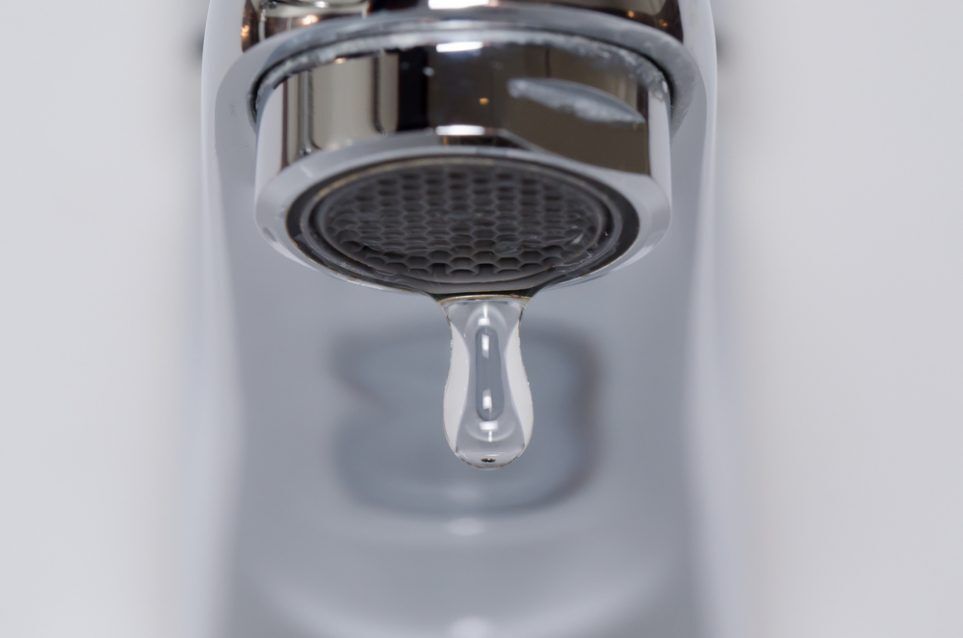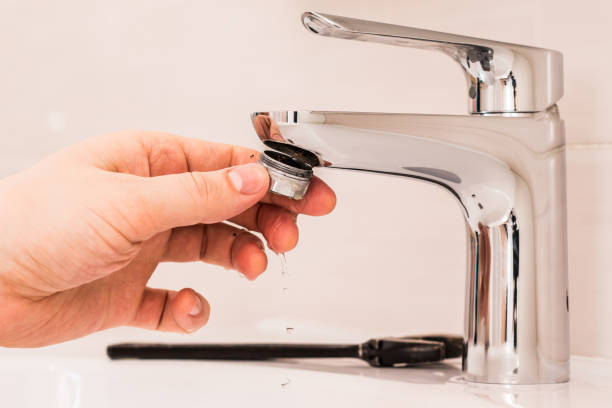Which It's Necessary to Fix a Leaking Faucet
Which It's Necessary to Fix a Leaking Faucet
Blog Article
Just how do you really feel about 4 Common Reasons for a Leaky Faucet?

Trickling taps could seem like a minor hassle, but their impact surpasses just the inconvenience of the sound. From drainage to incurring unneeded financial prices and wellness risks, neglecting a dripping faucet can result in different consequences. In this write-up, we'll delve into why it's vital to resolve this usual home problem quickly and effectively.
Waste of Water
Environmental Impact
Dripping faucets contribute substantially to water wastage. According to the Environmental Protection Agency (EPA), a single faucet leaking at one drip per second can lose greater than 3,000 gallons of water annually. This not just pressures water resources but likewise influences ecosystems and wildlife based on them.
Financial Expenses
Boosted Water Costs
Past the ecological influence, dripping taps can blow up water costs significantly. The collected wastefulness over time converts right into greater utility expenses, which can have been avoided with timely fixings.
Possible Residential Or Commercial Property Damages
Additionally, prolonged trickling can bring about harm to fixtures and surfaces bordering the faucet. Water build-up can create staining, deterioration, and even architectural issues if left unattended, causing additional repair service expenses.
Wellness Worries
Mold And Mildew and Mildew Development
The continuous visibility of wetness from a dripping faucet produces an excellent environment for mold and mildew and mildew development. These fungi not only endanger indoor air high quality yet also posture health threats, particularly for individuals with breathing problems or allergies.
Waterborne Diseases
Stationary water in leaking taps can come to be a breeding ground for microorganisms and other microorganisms, increasing the risk of waterborne diseases. Pollutants such as Legionella microorganisms flourish in stationary water, potentially bring about major ailments when ingested or inhaled.
DIY vs. Specialist Repair
Advantages and disadvantages of Do It Yourself Repair Service
While some may try to repair a leaking faucet themselves, DIY fixings come with their very own set of difficulties. Without correct knowledge and tools, DIY attempts can worsen the concern or result in insufficient fixings, lengthening the problem.
Advantages of Working With a Professional Plumber
Hiring a professional plumber makes sure that the underlying source of the dripping tap is addressed successfully. Plumbing technicians have the expertise and equipment to diagnose and repair faucet issues efficiently, saving time and minimizing the risk of more damages.
Step-by-Step Overview to Taking Care Of a Dripping Faucet
Tools Required
Before trying to deal with a trickling tap, collect the needed tools, including an adjustable wrench, screwdrivers, substitute parts (such as washing machines or cartridges), and plumber's tape.
Common Faucet Issues and Their Solutions
Identify the type of tap and the details concern causing the drip. Common problems include worn-out washers, corroded shutoff seats, or damaged O-rings. Describe manufacturer instructions or online tutorials for detailed assistance on repair work.
Preventive Measures
Routine Maintenance Tips
To prevent trickling taps, do routine maintenance such as cleansing aerators, evaluating for leaks, and replacing damaged parts promptly. In addition, think about mounting water-saving gadgets or updating to a lot more reliable components.
Value of Prompt Fixes
Attending to trickling taps as quickly as they're seen prevents more water wastefulness and possible damages, ultimately saving both water and money in the long run.
Effect On Building Value
Assumption of Well-Maintained Building
Maintaining a building in good condition, consisting of dealing with maintenance concerns like leaking taps, enhances its viewed value and desirability amongst possible purchasers or tenants.
Impact on Resale Value
Features with properly maintained plumbing components, consisting of taps, command greater resale worths in the real estate market. Attending to trickling taps can contribute to a positive perception during residential or commercial property assessments and negotiations.
Environmental Responsibility
Specific Contribution to Conservation
Taking duty for taking care of dripping taps aligns with wider initiatives toward water preservation and ecological sustainability. Every person's actions collectively make a considerable impact on protecting priceless sources.
Lasting Living Practices
By focusing on timely fixings and adopting water-saving practices, people contribute to sustainable living methods that benefit both existing and future generations.
Conclusion
Dealing with a leaking faucet exceeds mere comfort; it's a crucial action towards saving water, decreasing financial costs, and protecting health and wellness and property. Whether via do it yourself fixings or professional aid, acting to take care of leaking faucets is a tiny yet impactful method to promote responsible stewardship of resources and contribute to a much healthier, much more lasting future.
How to Fix a Dripping or Leaky Faucet
A leaking faucet is one of the most common problems that homeowners encounter, but it being commonplace doesn’t make it any less annoying. The constant drip drip drip of a leaking bathtub faucet, showerhead, or sink tap can disturb your home’s serenity. Left neglected, a dripping faucet can also result in higher water bills and discoloration or mold growth in your sink or plumbing fixtures.
Fortunately, you don’t have to be a trained plumber to know how to stop a dripping faucet. With some basic tools, replacement parts, and a little patience, leaky faucet repair is a breeze. In this article, we’ll explain what causes dripping faucets and how you can fix them.
What Causes a Leaking Faucet?
Kitchen and bathroom faucets come in all manner of designs, but most involve some combination of valves, O-rings, seals, and washers. The O-ring is usually the weakest link, but any one of these pieces can wear down over time. Heat, moisture, temperature fluctuations, minerals, mold, and movement can contribute to warping and corrosion, breaking the watertight seal. This just comes with the territory of being a homeowner. Everything is always subject to wear and tear, and some component parts of your appliances and fixtures need to be replaced on occasion. At least replacement O-rings are cheap!
More rarely, dripping faucets can be a symptom of excessively high water pressure. Were this the case in your home, you would probably notice that the leak is not isolated to one faucet. Water pressure issues are harder to resolve on your own. We recommend contacting a professional plumber if you suspect your water pressure is too high.
How to Fix a Dripping Faucet
Pipe wrench or monkey wrench Allen wrench set Screwdrivers Old towel or rag Shut off the water.
Before you do anything, you need to turn off the water to keep from drenching your kitchen or bathroom. You should find a valve under the sink and against the wall. Once you’ve turned this valve, try turning the faucet on to confirm that the water source has been cut off.
If you can’t locate your local valve for the faucet you’re working on, you can always shut off the water to the house at the main valve. Of course, this will prohibit anyone from using the sinks, showers, or toilets while you’re working on the faucet that’s giving you trouble.
Plug or block the drain.
You’ll be disassembling the faucet and removing some small bits of hardware. Plug the drain with a stopper or rag to avoid the possibility of a small screw falling into your P-trap.
Take apart the faucet assembly.
There are several varieties of kitchen and bathroom faucets, each with its own manner of assembly. For detailed instructions on how to disassemble your faucet, you can refer to the fixture’s manual or contact the manufacturer. If you know whether you have a ball, disc, cartridge, or compression faucet, you can find detailed schematics online.
In general, you need to begin by removing the faucet handles. You might notice a small screw that you’ll need to remove with a screwdriver or Allen wrench. If you don’t see any visible securing hardware, it’s likely hidden under a decorative cap that can be unscrewed or popped off with flathead screwdriver.
Remove each piece methodically, consulting a schematic when necessary. Take notes or arrange the pieces in such a way to make it easier to correctly reassemble the faucet later.
Remove the cartridge.
Once you’ve removed the handles and securing hardware, you should be able to remove the valve cartridge or stem. Some cartridges will slide right out. Other faucet models will require you to loosen a nut with a pipe wrench before you can remove the valve stem.
Examine the exposed hardware.
With the cartridge or stem removed, inspect the component parts. Check the rubber O-rings for wear and tear. Also examine the seat washer for corrosion or other damage. These pieces are usually the responsible parties for a dripping faucet, but it’s worth inspecting the other component parts while you have the faucet disassembled.
Find replacement parts.
Once you’ve identified which faucet component has failed, find an identical replacement. Your local hardware store should have O-rings, seat washers, and other standard components in stock. If you have a luxury or uncommon faucet, you may have to contact the manufacturer for a replacement part.
It’s a good idea to take your old parts with you to the hardware store so you can compare them with the store’s inventory and be sure you’re purchasing the correct replacement.
Reassemble the faucet.
With your new parts in hand, reconstruct the faucet and handles. Don’t be tempted to overtighten screws or nuts. You might think this could create a better seal, but it can instead damage or bend a delicate part of the assembly and create a new problem for you.
Turn on the water and test the faucet.
The only thing left to do is test your work. Unplug the sink, turn the water back on, and try the faucet. Congratulate yourself on a job well done!
https://www.libertyhomeguard.com/how-to-fix-a-dripping-or-leaky-faucet/

I have been very fascinated by Leaky Faucets: Why They Happen & What to Do About Them and I really hope you enjoyed reading my page. Do you know another person who is enthusiastic about Water Dripping from Faucet: Why and How to Fix? Please feel free to promote it. We love your readership.
Report this page